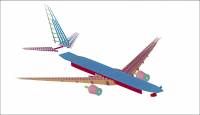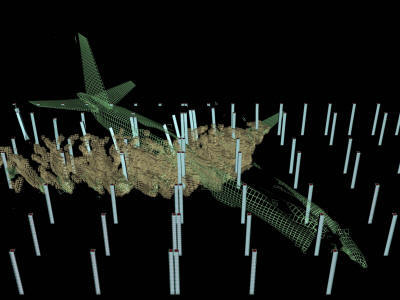High-Fidelity Visualization of Large-Scale Simulations
| Summary |
|---|
| The goal of our team was to produce a visualization of the September 11, 2001 attacks on the Pentagon and World Trade Center. The immediate motivation for the project was to understand the behavior of the building under the impact. The longer term motivation was to establish a path for producing high-quality visualizations of large scale simulations. The first challenge was managing the enormous complexity of the scene to fit within the limits of state-of-the art simulation software systems and supercomputing resources. The second challenge was to integrate the simulation results into a high-quality visualization. |
| Project Website - http://www.cs.purdue.edu/homes/cmh/simulation |
| WTC-I (North Tower) | |
|---|---|
| The goal of this phase of the project was to produce a visualization of the September 2001 attack on the WTC-I (North Tower). To meet this challenge, we extended the custom importer previously used to support new and more complicated features. Our simulation was then integrated into Google Earth to capture the surrounding environment. | |
| Complete Video | |
   FEA model of the top 20 floors of the building |    FEA aircraft model |
 Visualization of the facade damage |  Oblique view, no fire |
 Core highlighted |  Fireball before exit |
 Debris Exiting |
|
| Pentagon | |
|---|---|
| This first phase of the project produced a visualization of the September 2001 attack on the Pentagon. To meet this challenge, we implemented a custom importer that simplifies and loads the massive simulation data in a commercial animation system. The surrounding scene is modeled using image-based techniques and is also imported in the animation system where the visualization is produced. There is a video of the simulation and its context. The link is found in the publications section below on this page. Other copies and videos can be found here and elsewhere. |
|
 Column FEA model. |   CG and FEA aircraft models |
 Visualization of scene before impact. |  Simulation output data. |
 Simulation output data rendered in animation system. |  Jet fuel visualization (ray traced material). |
  Photographs of 3D images showing liquid-column impact. |  Liquid-column impact study, wireframe visualization. |
    Visualization of scene after impact |
|
| Publications |
|---|
| People |
|---|